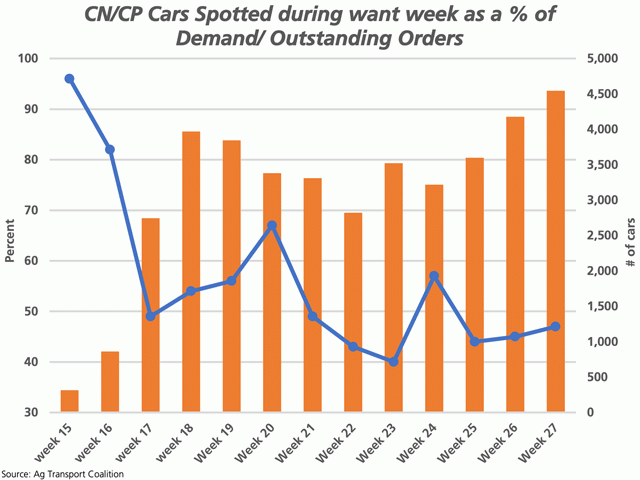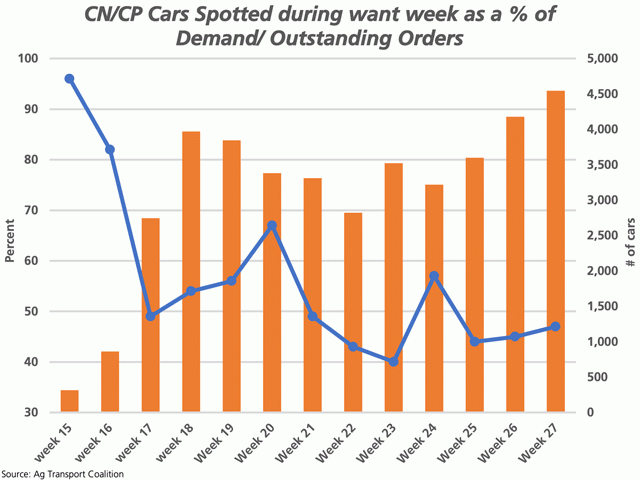Canada Markets
Canadian Railways Continue to Struggle
According to the AG Transport Coalition, a group representing 90% of the prairie grain shipped, demand for hopper cars for shipping in week 27 was 3,586 cars, the lowest in three weeks and 2.1% lower than the previous four-week average. This is down 56% from the same week in 2020-21 and 53% below the three-year average for this period.
Year-to-date demand as of week 27 totals 155,420 cars, down 42.7% from the same period last crop year. While only a rough comparison as not all Canadian grain moves by rail, Agriculture And Agri-Food Canada's (AAFC's) January forecast for 2021-22 shows total exports of all principal field crops down 35.4% in 2021-22 from the previous year.
While week 27 demand totaled 3,586 cars, only 1,685 cars were spotted to meet this demand, which includes 105 cars that were spotted early. This is the smallest number of cars spotted in three weeks, while only six cars higher than the previous four-week average of 1,679 cars.
Meanwhile the backlog or the number of outstanding orders continues to grow, as seen with the brown bars on the attached chart, measured against the secondary vertical axis. This number has grown to 4,546 cars in week 27, a third consecutive weekly increase, the highest seen on the chart and a crop year high. This number is reported split between CN Rail at 2,534 cars, and CP at 2,012 cars.
P[L1] D[0x0] M[300x250] OOP[F] ADUNIT[] T[]
At 90 metric tons (mt) per car, this represents movement of 418,140 mt, affecting the industry's export potential on the West Coast while contributing to weaker basis levels on the Prairies as pressure to secure deliveries and load out cars wanes due to the limited supply of cars.
A Pulse Canada podcast with the AG Transport Coalition points to CN's performance as of week 26, one week earlier, to show that less than 40% of the cars wanted for loading were placed during the week wanted for loading for five consecutive weeks, the poorest stretch of performance seen for the company for at least five years.
The industry needs to ask some tough questions: if the railroads can't service the industry in a year of a poor crop, how can performance bounce back in to accommodate even an average crop?
**
DTN 360 Poll
This week's DTN 360 poll asks your opinions about your approach to secure herbicide supplies for 2022. Please weigh in with your thoughts; you can find the poll on the lower-right side of your DTN Home Page.
Cliff Jamieson can be reached at cliff.jamieson@dtn.com
Follow him on Twitter @Cliff Jamieson
(c) Copyright 2022 DTN, LLC. All rights reserved.






Comments
To comment, please Log In or Join our Community .